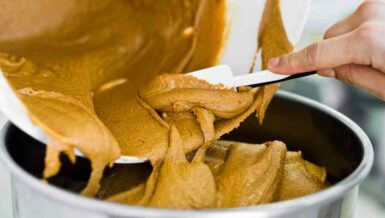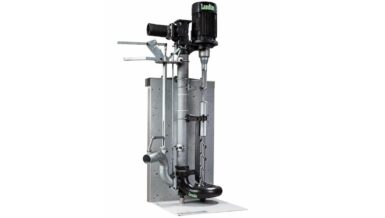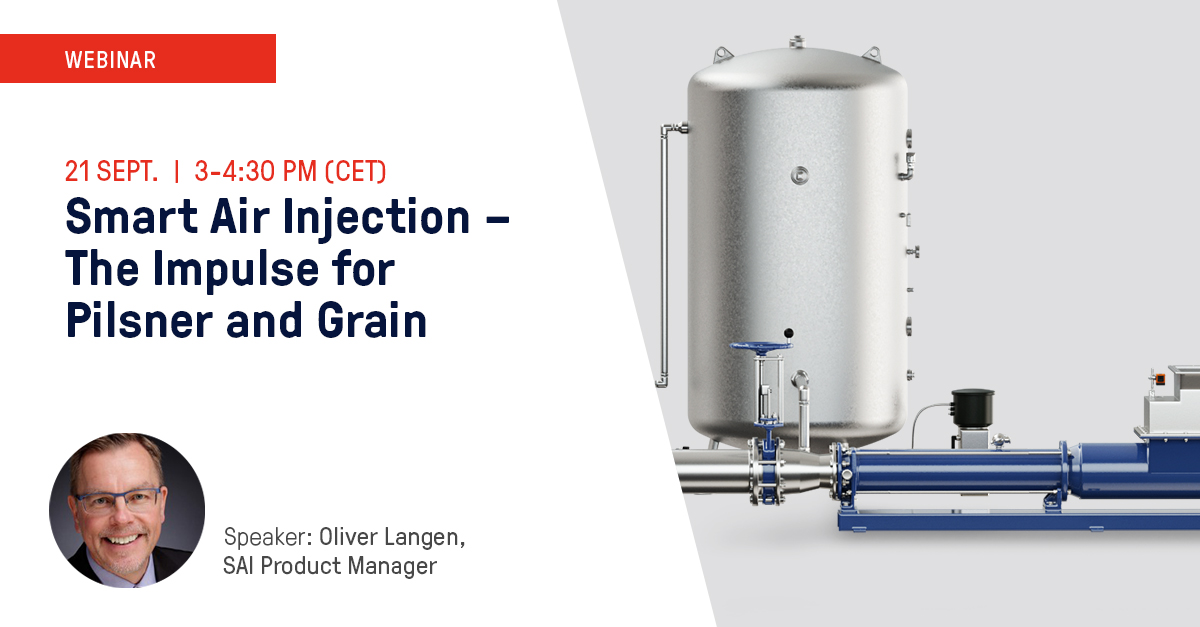Progressing cavity pumps are particularly good for these tasks as they ensure conveying at stable pressure and volume, are gentle on the product and allow high-precision dosing. These conveying properties are based on the special displacement principle used by this pump: The main components of the system are a rotating component – the rotor – and a fixed component – the stator – in which the rotor oscillates.
Pump processes especially gentle on the product
Because the conveying chambers are self-sealing, there is no backflow between them which might expose the medium to mechanical stress. In addition, movement of the conveyed medium with stable volume and pressure is ensured, so that no shear forces and hardly any pulsation occur – in contrast to piston pumps, for example – which could damage or alter the medium. This is crucial for the product quality of many food types, because, for example, yoghurt or soaked starch are sensitive to shear forces and their structure could be destroyed under excessive mechanical stress. Depending on the chamber dimensions, solids up to a size of 150 mm can be transported. Depending on the model, progressing cavity pumps can even handle highly viscous media, such as tomato pulp or frozen orange concentrate, of up to 1 Million mPas.

Safe conveyance of critical media
Despite the benefits, progressing cavity pumps have the reputation of being only of limited suitability for tasks with product contact in the food industry. The main concerns regard the risk of food contamination through rubber abrasion. But even for those rare media there are hygienic progressing cavity pumps available, where only a very low level of abrasion occurs. In an internal risk assessment conducted on individual pumps, the rubber removed through abrasion was put into relation with the expected total pumped volume during the entire stator operating time. The impurity caused by the food-safe elastomers is minimal with a single-figure ppb value and an unacceptable change in the composition of the conveyed medium can therefore be excluded.

In addition to this, specific hygienic progressing cavity pumps which are intended for hygienic critical applications fulfil a whole range of hygiene regulations – from EHEDG and the 3-D Sanitary Standard to the requirements of the US Food and Drug Administration (FDA). The food compatibility of the installed materials and the cleanability of the design lie at the heart of all these regulations. Conventional progressing cavity pumps are therefore adapted for use in hygienically sensitive areas. To ensure that they can be used in the food industry without risks, the elastomer used is specially selected for food contact.
For the food applications, compounds are selected which have good wear resistance, comply with FDA regulations and Regulation (EC) no. 1935/2004 and do not affect consumers’ health. For pumps installed in the food industry, only nitrosamine-free compounds are used, for example NBR, FPM, EPDM or silicone. All other contact materials in the hygiene progressing cavity pumps also have be food-grade compliant: In addition to the stators, the O-rings and the elastomer components of the mechanical seals also comply with the FDA requirements and/or Regulation (EC) no. 1935/2004. All metal surfaces in contact with the product are made of V4A stainless steel, defined alloys such as 1.4571 and 1.4404 and higher-quality stainless steel, including 1.4462.
Harmless food-safe lubricants
When it comes to the risk of food contamination through joint lubrication oils, different options for avoiding this are possible. And this complies to pumps as well as to any other machine with food contact. For the pin joints at the end of the coupling rod, for example, a design can be chosen which allows the use of mainly synthetic food-grade oils, which do not contain toxic components. The category of food-grade lubricants has already proven successful on the market. These are harmless to health, tasteless, odour-free, food-safe and internationally approved.
Using special synthetic lubricants is the only way to ensure that no health risks occur for consumers if the substances come into contact with the food.
Their use is generally monitored by the food inspection authorities in the scope of corporate due diligence. In the USA, for example, the FDA defines which ingredients may be used for food-grade lubricants. The list 21 CFR §178.3570 contains those raw materials which may contain food-grade lubricants, with the chemical designation and the respective quantity. Only those substances are listed for which the harmlessness to health has been determined through comprehensive toxicological tests.
Joints without lubrication

Open hygiene pin joints are another option to fully prevent contamination of food with lubricants. These joints comply with the regulations of the 3-A Sanitary Standards in the USA as well as with the European EHEDG. They feature a polished design with few gaps and dead spaces and can therefore be cleaned without residue. As the surfaces are fully in contact with the medium during pumping, they are automatically lubricated by the medium itself and require no external lubricant. It has to be ensured, though, that the lubricating properties of the medium are sufficient. Media containing oil or grease are suitable, for example sauces, mayonnaise, sausage meat or dairy products, such as cream or yoghurt. But viscous media like fruit juice concentrate, yeast or dough also provide natural lubrication for the joint. Abrasive media, on the other hand, would cause wear on the open model.
Flexible rods do not require lubrication or sealing. They can be used also under extreme ambient pressure.
If the product cannot ensure lubrication of the joints, flexible rods are a good alternative for connecting the drive with the shaft: The flexible rod is shrunk with the rotor and connection point, hermetically sealing the transition. Because there is no friction between components in this connection, the flexible rod requires neither lubrication nor seals. This means it can even be used at extremely high ambient pressures and temperatures. At the same time, high operational reliability and a long service life are achieved with low maintenance costs. Also the flexible rod complies with the regulations of the 3-A Sanitary Standards in the USA and the guidelines of the EHEDG.

Special mechanical seal design avoids material adhesions
The mechanical seals are also neuralgic points in pumps. The models used in progressing cavity pumps have to be made from materials which comply with the hygiene standards, but the design also has to prevent material adhesions. A design developed especially for this purpose has already proven successful in practical application: This is a special seal where one of the two gliding surfaces is pointed. This results in a higher contact pressure and easier start-up of the pump in case of adhesions through reduction of the torsional stress. The smaller gliding surface means that the torque that which can act on a possibly sticky seal is much smaller.












